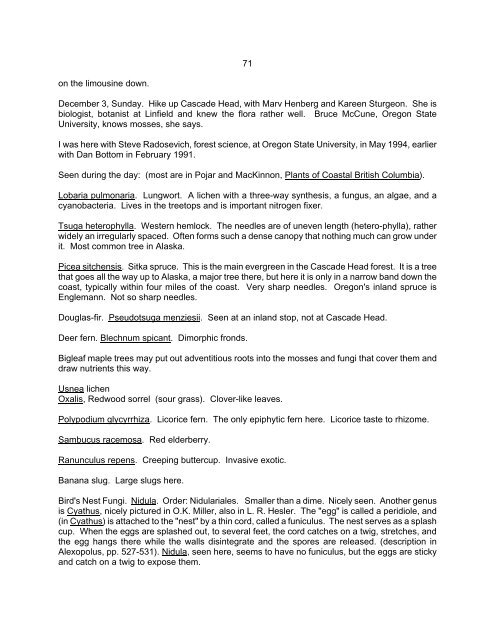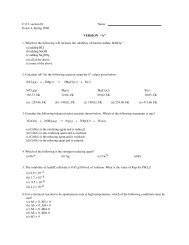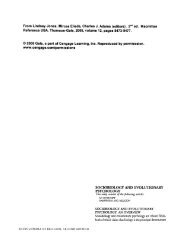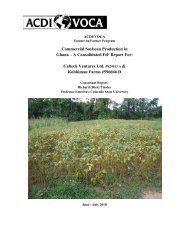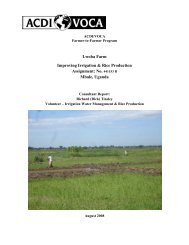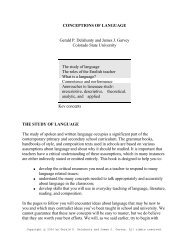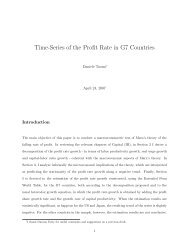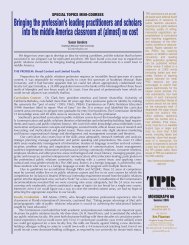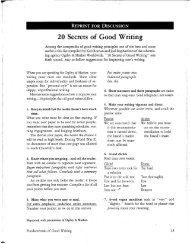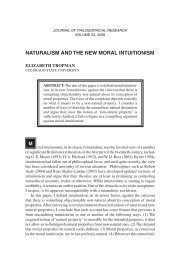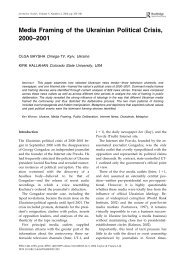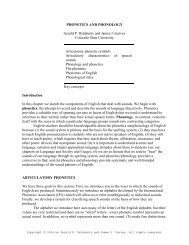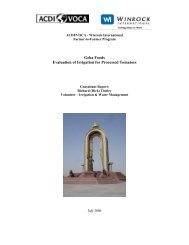Trail Log 1995-1997 - Lamar at Colorado State University
Trail Log 1995-1997 - Lamar at Colorado State University
Trail Log 1995-1997 - Lamar at Colorado State University
Create successful ePaper yourself
Turn your PDF publications into a flip-book with our unique Google optimized e-Paper software.
71<br />
on the limousine down.<br />
December 3, Sunday. Hike up Cascade Head, with Marv Henberg and Kareen Sturgeon. She is<br />
biologist, botanist <strong>at</strong> Linfield and knew the flora r<strong>at</strong>her well. Bruce McCune, Oregon St<strong>at</strong>e<br />
<strong>University</strong>, knows mosses, she says.<br />
I was here with Steve Radosevich, forest science, <strong>at</strong> Oregon St<strong>at</strong>e <strong>University</strong>, in May 1994, earlier<br />
with Dan Bottom in February 1991.<br />
Seen during the day: (most are in Pojar and MacKinnon, Plants of Coastal British Columbia).<br />
Lobaria pulmonaria. Lungwort. A lichen with a three-way synthesis, a fungus, an algae, and a<br />
cyanobacteria. Lives in the treetops and is important nitrogen fixer.<br />
Tsuga heterophylla. Western hemlock. The needles are of uneven length (hetero-phylla), r<strong>at</strong>her<br />
widely an irregularly spaced. Often forms such a dense canopy th<strong>at</strong> nothing much can grow under<br />
it. Most common tree in Alaska.<br />
Picea sitchensis. Sitka spruce. This is the main evergreen in the Cascade Head forest. It is a tree<br />
th<strong>at</strong> goes all the way up to Alaska, a major tree there, but here it is only in a narrow band down the<br />
coast, typically within four miles of the coast. Very sharp needles. Oregon's inland spruce is<br />
Englemann. Not so sharp needles.<br />
Douglas-fir. Pseudotsuga menziesii. Seen <strong>at</strong> an inland stop, not <strong>at</strong> Cascade Head.<br />
Deer fern. Blechnum spicant. Dimorphic fronds.<br />
Bigleaf maple trees may put out adventitious roots into the mosses and fungi th<strong>at</strong> cover them and<br />
draw nutrients this way.<br />
Usnea lichen<br />
Oxalis, Redwood sorrel (sour grass). Clover-like leaves.<br />
Polypodium glycyrrhiza. Licorice fern. The only epiphytic fern here. Licorice taste to rhizome.<br />
Sambucus racemosa. Red elderberry.<br />
Ranunculus repens. Creeping buttercup. Invasive exotic.<br />
Banana slug. Large slugs here.<br />
Bird's Nest Fungi. Nidula. Order: Nidulariales. Smaller than a dime. Nicely seen. Another genus<br />
is Cy<strong>at</strong>hus, nicely pictured in O.K. Miller, also in L. R. Hesler. The "egg" is called a peridiole, and<br />
(in Cy<strong>at</strong>hus) is <strong>at</strong>tached to the "nest" by a thin cord, called a funiculus. The nest serves as a splash<br />
cup. When the eggs are splashed out, to several feet, the cord c<strong>at</strong>ches on a twig, stretches, and<br />
the egg hangs there while the walls disintegr<strong>at</strong>e and the spores are released. (description in<br />
Alexopolus, pp. 527-531). Nidula, seen here, seems to have no funiculus, but the eggs are sticky<br />
and c<strong>at</strong>ch on a twig to expose them.


